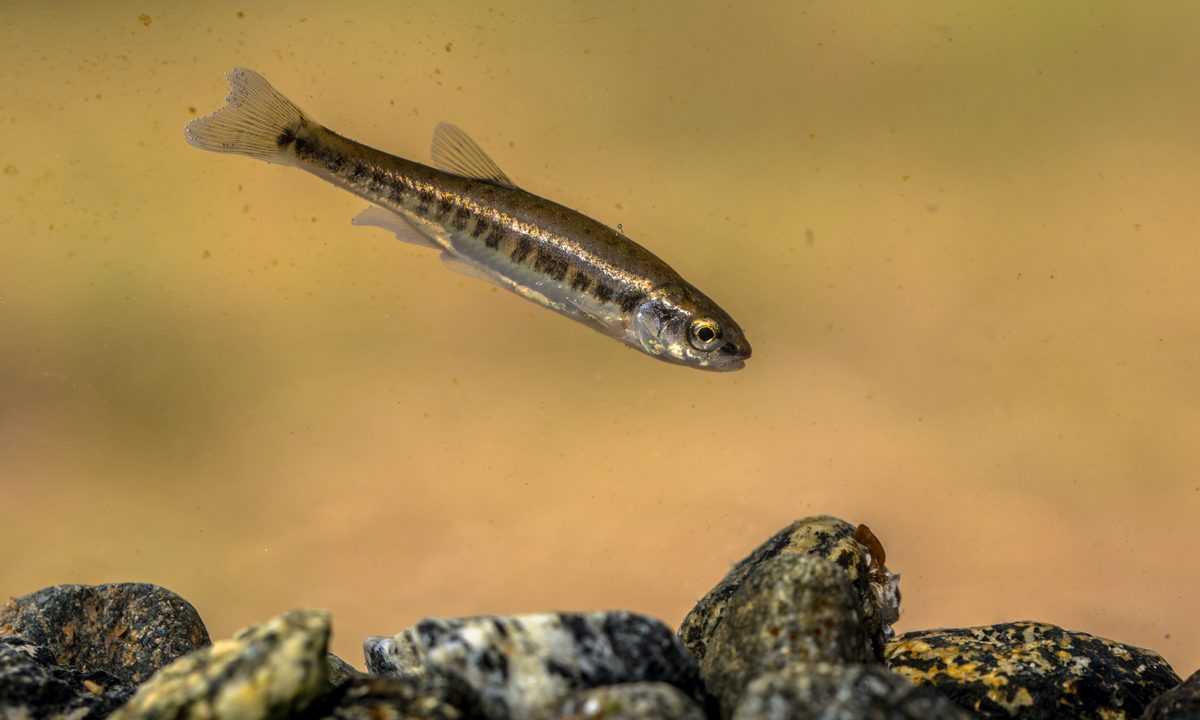Breeding minnows is a large yet rewarding undertaking that many aquarists consider at some point. It's fascinating to watch an entire population come to life before your eyes, and caring for fish can be a valuable experience for children who aren't ready for higher-maintenance pets. Even adults can benefit from a tank full of fish — research has proven that watching fish swim can ease muscle tension and produce a calming effect (via Humana). Still, breeding minnow fish is a serious commitment that requires a lot of forethought and preparation. Are you ready to care for hundreds (yes, it could be hundreds) of baby fish?
Before you start changing your mind, PawTracks is here to help. This comprehensive guide to minnow fish breeding contains all you need to know about the reproduction rate and needs of these little fish. Here’s what to expect when you’re expecting … minnows.
What you need to breed minnow fish
Apart from all the basics you need to care for your adult fish, you should plan to have the appropriate supplies for baby minnows, too. Food, cleaning supplies, lights, and a heating source are just a few of the items to put on your list.
Breeding minnows will require a lot of space. It’s recommended to have multiple tanks to keep all fish, especially the babies, safe from one another. An additional, possibly even more important reason to keep fish separated is to avoid overpopulation of the tank, which can happen a lot faster than you may think.

How fast do minnows reproduce?
The term “breed like rabbits” may as well be “breed like minnows”! Once introduced to the opposite sex, these little fish can spawn every four or five days, laying up to 700 eggs each time. The number of eggs per spawning varies widely by species; for example, goldfish lay around 1,000 eggs per spawning, while a carp can lay up to 300,000. Remember, not all eggs get fertilized, so don’t expect to have thousands of fry to care for. It’ll still be a lot, though!
That being said, not all fertilized eggs will survive long enough to reach adulthood or even infancy. Many fry are eaten by larger fish — even their parents — and young fish often compete for resources (via Sciencing). This is another biological reason why minnows lay so many eggs and are able to reproduce so quickly.

How to breed your minnows
Breeding and raising minnows in a pond will, of course, be a bit different than caring for them in an aquarium. For example, you likely won’t be able to separate male and female fish, which gives you less control over the timing and frequency of reproduction.
Step 1: For those raising fish in tanks, though, beginning with minnows in two separate tanks will help the process run smoothly while preventing overpopulation. While the sexes are separated, the North American Native Fishes Association (NANFA) recommends “keeping them cool and on an eight- to 10-hour light cycle for a month.”
Step 2: After a month, you can introduce the fish to one another in a larger tank with gravel and plants (places for the eggs to stick while they develop). At this point, adjust the temperature a few degrees and increase light to 12 to 16 hours per day.
Step 3: You may notice when your fish are spawning based on the male’s intense colors and erect fins (via NANFA). This should occur a few days after introducing the fish to one another. The female will be responsible for depositing the adhesive like eggs on top of the gravel or on the plants in the tank, while the male(s) who follow try to fertilize the eggs. The eggs that are not fertilized die within a few hours.
Step 4: When this part of the process is complete, the adult fish should be removed for the safety of their young.
Step 5: Once fertilized, the egg will hatch at around five days (via NANFA). At this stage, the baby fish are called fry, and any parental care from the father ceases. As fry, they should be fed microworms, baby brine shrimp, and even powdered spirulina.
Step 6: Before introducing your young fish to any other tank environment (which you should do eventually, or else it will get crowded in that tank!), make sure to quarantine your fish for four weeks or have a vet give them the all clear.
From spawning to hatching, raising minnows can be an exciting and rewarding experience for any fish owner, even kids. As far as breeding goes, minnows are lower maintenance than many other pets, which makes them a safer option for newer fish owners and aquarium hobbyists. Before you know it, the population in your tank will have multiplied more than you could’ve imagined! Might not be a bad idea to buy that extra tank after all.




